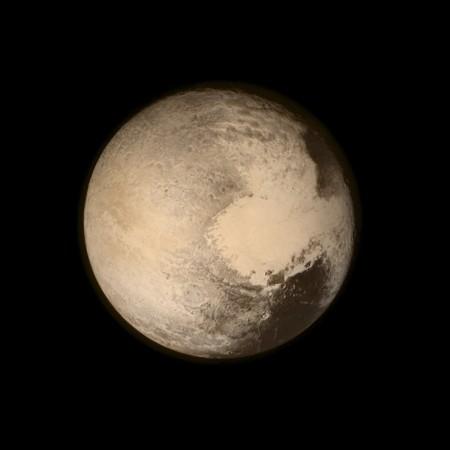
Pluto could be a giant comet made of billions of comets, say researchers after studying the dwarf's defining feature - nitrogen ice glaciers that make up the heart like formation's left lobe, called Sputnik Planitia. Scientists now believe that Pluto could have, in fact, be formed from billions of Kuiper belt objects.
"We found an intriguing consistency between the estimated amount of nitrogen inside the glacier and the amount that would be expected if Pluto was formed by the agglomeration of roughly a billion comets or other Kuiper Belt objects similar in chemical composition to 67P, the comet explored by Rosetta," Chris Glein, a scientist at the Southwest Research Institute (SwRI) in San Antonio, said in a statement, reports Space.com.
Researchers compiled their data and made certain inferences about Pluto's evolution based on information collected from ESA's Rosetta and NASA's New Horizons missions - both of which flew by Pluto in July 2015.
"Our research suggests that Pluto's initial chemical makeup, inherited from cometary building blocks, was chemically modified by liquid water, perhaps even in a subsurface ocean," Glein said.
The data to compare Pluto's make up with that of a comet came from the ESA's Rosetta mission, notes the report.
The mission involved flying a probe out to a comet called the 67P/Churyumov-Gerasimenko and orbiting it from 2014 to 2016. The mission even attempted to soft-land a probe called Philae onto the comet itself, but that did not turn out too well.
Despite the similarities in their composition and the fact that Pluto is the largest body in the Kuiper belt, researchers conclude that this theory is not definitive. Another theory called the Solar model is equally viable, they add. The Sun Model speaks of planet formation from coalesced fragments of ice which have the chemical composition closer to the Sun.
"Using chemistry as a detective's tool, we are able to trace certain features we see on Pluto today to formation processes from long ago," Chris added. "This leads to a new appreciation of the richness of Pluto's 'life story,' which we are only starting to grasp."
The results of this study were first published in the journal Icarus.














